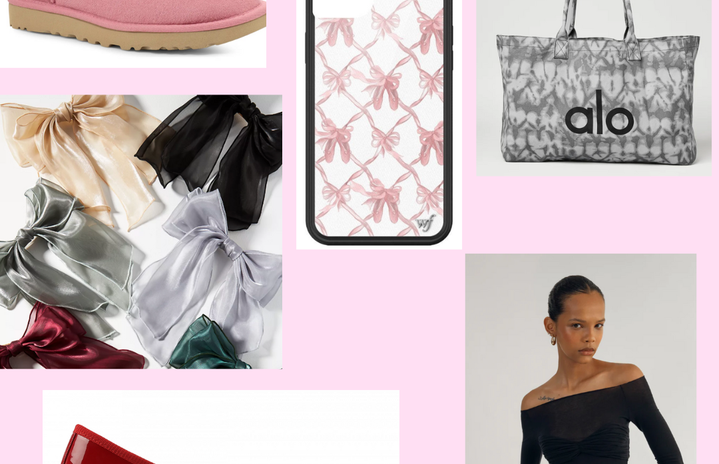You’re sat in bed after a long, exhausting day, looking through your favourite clothing brand’s website. Pop-up advertisements incessantly displaying all the latest styles and unbelievably beautiful people who have worn them. “Multiple ways to purchase that new black dress for 50% off,” or, “Comfortable footwear for cheap prices.” Having recently impulsively spent money on clothes, you still reason with yourself that a new purchase will be worth it. Why is this?
Fast Fashion
The world of fast fashion has gained noticeable traction since the 90s, with an increase in recent years due to its affordability, the emergence of social media and changes in supply chain models. This industry can be characterised by ever-changing trends that encourage consumers to follow and adopt the latest fashion styles. It is particularly advantageous as it allows consumers to purchase luxurious styles for cheaper prices. Clothing trends in this context implies items that are labelled as particularly “hot” or “stylish” oftentimes by specialists in the industry or self-proclaimed fashionistas. Some examples of recent trends according to Vogue include ‘Y2K inspired’ items such as oversized pants, cheetah print or Cotton Boxer Shorts.
There are many reasons why one might decide to purchase a trendy outfit. It could be that a person is apathetic to fashion and just buys what is advertised. Or it might be more than that. For example, the idea of “throwaway fashion” stems from social media culture that emphasises the need to not repeat outfits. As a result, certain consumers who are more concerned about their social media presence might be incentivised to participate in trends more actively. Another explanation might be that purchasing clothes offers a means to improve negative emotions in consumers, a phenomenon often labelled as retail therapy, where one’s personal short-term gratification comes from buying clothes. There is also the influence of advertisements and marketing. Arguably more effective in a generation where outward perception is valued more strongly, models and fashion influencers can be seen telling consumers about the benefits of purchasing a new item of clothing. They would do this by utilising their personal clout and audience reach.
Fear of missing out (FOMO)
Another perhaps less obvious explanation for a consumer purchasing trendy clothes is FOMO. As clothes are often associated with a person’s identity and sometimes class, the constant and aggressive marketing of a “need” to buy clothes might result in certain consumers feeling pressured to appear or dress a certain way. The issue with impulsivity is that it often results in consumers only wearing an item a few times before selling it or disposing of it to buy the next trendy piece, thus creating a vicious cycle of unsustainability.
Two of my friends had the following insights to share on their purchasing tendencies:
“To be honest, I usually like to thrift but every so often I do give into the fast fashion content. Sometimes I’ll base my thrifting off of fast fashion trends but if I want new clothes, admittedly I do buy them off of shops like Shein and Temu” – Alissica Thomas
“I believe that some people feel pressure to participate in clothing trends, especially with the rise of influencer content. But it all depends on the person’s mindset. …in today’s world, where influencers lead the latest trends, there is pressure for some people to participate in these trends to feel a sense of belonging and acceptance. The FOMO can drive many to purchase ‘trendy’ items even when they might not need it, sometimes also sacrificing themselves financially to complete their desired identity, which could be for example, as someone who is fashionable and ‘in the know’” – Hakob Ghazaryan
Impulsive Buying
Impulsive buying can be described as unplanned or unintentional purchasing based on an internal or external stimulus. With many fast fashion brands, a sense of urgency and exclusivity is often marketed profusely as consumers are encouraged to buy an item before it sells out or before a sale ends. Similarly, many fast fashion brands like Zara have multiple collections a year so the constantly changing styles might promote a more haste purchasing behaviour. Further, some research has also been done to outline the impact of the COVID-19 pandemic on impulsive buying. A common conclusion seems to be that multiple quarantines meant that consumers were searching for social gratification through online purchasing and that there was intense emotional gratification stemming from buying trendy clothes. Interestingly, this ties well to the growth of e-commerce and how the use of online transactions has arguably increased impulsivity due to the ease and convenience of such an action.
Here is another comment from my friend, this time regarding impulsive buying:
“I have definitely bought clothes impulsively for multiple reasons. The first one being retail therapy. If I’m feeling stressed out, sometimes it can be a quick fix to my mood. And also, if I see something on sale, it would also encourage me subconsciously to buy it, to grab myself a ‘steal’” – Hakob Ghazaryan
The effects of fast fashion trends
Engaging in fast fashion trends and impulsive buying has a huge negative impact on sustainability. As this journal article points out: “…the waste of outdated or unwanted outfits accounts for some 17 million tons … and accounts for 10% of global CO2 emissions.” It also encourages a business model that prioritises a globalised supply chain that capitalises on exploitative behaviour and cheap labour to justify low prices. Lastly, whilst buying a cheaper item might be financially interesting, one quickly realises how much money can be wasted, especially if several items are bought and then thrown away a few months later.
Therefore, instead of purchasing fast fashion items, it might be preferable to buy second-hand clothes that are often well-priced and allow a person to discover his/her personal style. Another solution might be to attempt to purchase more timeless pieces of clothing as trends are often recycled anyways! Of course, there is fast fashion all around us so it’s easier said than done, however, trying to make a conscious effort to buy more ethically and support businesses that are sustainable is a good first step.


